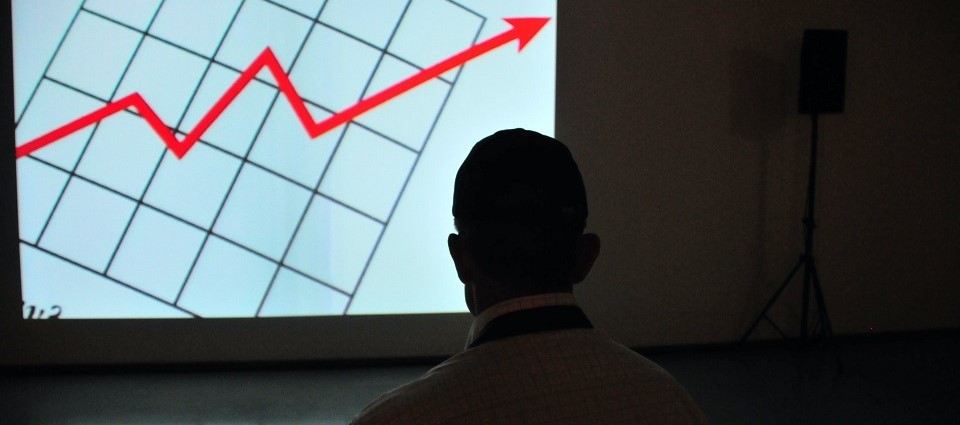
Managing BizOps Through Rapid Growth
Managing a business through rapid growth can be like guiding a ship through a field of icebergs. With the right strategy in place, managing can be both successful and rewarding.
How flexible is your current operational model in responding to change?
Building an organization with a Dynamic Business Operating Model would make it flexible, adaptable and resilient to respond to changes quickly and effectively. A Dynamic Business Operating Model is a necessity for growing companies today. The way people work, how they work, where they work, and how they approach work has changed. The “side hustle” for many has become a necessity, and the platforms to support these initiatives have adapted to meet the needs of the growing market.
As business leaders, we must be thinking in terms of how to make our companies as resilient as possible to change. The idea that we can keep doing business the way that we always have will create disadvantages for our companies against those that adopt a dynamic business operating model. When things change, the business leader who is prepared for it will be the quickest to adjust and re-engage the market.
A dynamic business operating model is one that is designed to adapt to change and evolve as the environment changes. Forces inside and outside of the business are going to impact business operations. The internal impactors tend to be those that we have a greater influence over, where those that happen to the business are completely out of its control. These include social, technological, economic, environmental, and political (or STEEP) factors.
The challenge that we typically have to overcome in our companies is what is known as “command and control” or “top down” leadership where all the thinking and direction come from the top (the leadership). In the dynamic model, flexibility, collaboration and an environment offering continuous learning enables companies to respond to changes faster and with greater precision than in the command-and-control environment.
An example of how the dynamic business operating model can work: Bindiya, a marketing coordinator on our team, publishes all of our content and also that of our clients. One day on a weekend, our client contacted her to inform her that the client would be participating in an event and would like for us to post something for her. Instead of reaching out to me, Bindiya immediately coordinated with the designer, and got the post produced and posted. I had no idea until the following Monday. If I had been involved in the process, since I was at a wedding that day, the post would not have gone up in time to achieve our clients’ goal.
In the book, “Team of Teams,” General Stanley McChrystal describes how the U.S. military adopted a similar model, which benefited from similar outcomes in their rapidly change operating environments. They could deploy teams faster, adapt to changes in the field and make decisions on the fly that ultimately allowed them to accomplish their missions.
The dynamic business operating model is not for everyone. This is an important conversation and acknowledgement that this isn’t for everyone is important. If you are clear on what you are looking for, the right people will actually be attracted to that type of environment. Keep in mind that if you present the organization like this, you must demonstrate that this is the model or where the company is going or your new hire will become quickly disengaged.
People who thrive in a dynamic business operating model environment tend to be;
People who struggle in the dynamic environment tend to rely on structured environments, tend toward risk aversion, prefer routine, are individual contributors, are slow to make decisions and rely on leadership / management to make decisions for them.
My experience has shown that the dynamic business operating model works well with a mix of those who would thrive in the environment, and those who provide more of the “stability” that organizations need to get stuff done. As leaders, we must be strategic in where we place our team members and what expectations we would have of them. Clearly communicating this is critical so that they know when they should and step up.
The other benefit to the dynamic business operating model is that while you typically hire an individual for a specific role, because team members are given goals, expectations and frameworks rather than a set of SOP’s, you have a better picture of where team members are actually strong. I have seen, repeatedly, when hiring someone for one role that they actually had skills in another perhaps unrelated role, or at least one that I wasn’t hiring for. As a result of understanding this, when things changed, I had more flexibility in re-assigning roles in order to press forward.
The dynamic operating model, while it may not be for everyone, is one that will allow businesses to be resilient as the changes that inevitably happen in the world, often on multiple plains. The flexibility, collaboration, de-centralized decision making, and continuous learning environment will make it extremely attractive to certain candidates and team members. If you think about the level of change that had to be adopted in order to make it through COVID, it is easy to see that companies that adopt this model have a strategic advantage that isn’t easily reproduceable.
Aepiphanni is a Business Consultancy that provides Advisory, Management Consulting and Managed Services to business leaders and entrepreneurs seeking to improve or expand operations. We are the trusted advisor to those seeking forward-thinking operational and strategic solutions to help them plan for and navigate through the challenges of business growth. Learn more about us at https://aepiphanni.com or register for a complimentary discovery session at http://coffeeandaconsult.com.

Managing a business through rapid growth can be like guiding a ship through a field of icebergs. With the right strategy in place, managing can be both successful and rewarding.

There can be strength in numbers, and successful business partnerships and strategic alliances are a testament to this. Studies show that corporate alliances increase by

From a declining economy to a rising unemployment rate, the Coronavirus pandemic has made a major impact on all industries. This change left businesses with
Copyright © 2023 The Aepiphanni Business Catalyst Group, Inc.